Introduction and Importance of Modern User Interface
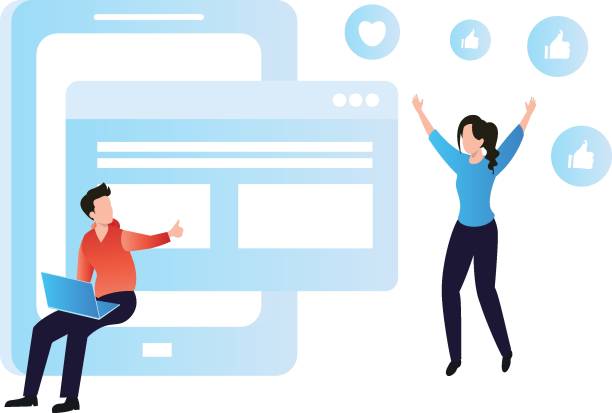
In today’s digital world, the first thing that attracts users to a website is its overall look and feel.
#Modern_Website_Design is no longer just about visual aesthetics; it refers to creating a seamless, enjoyable, and efficient experience for the user.
User Interface (UI) acts as a bridge between the user and the website’s content and plays a vital role in the success or failure of an online platform.
A modern user interface, beyond mere aesthetics, is based on User Experience (UX) principles to facilitate user interaction with the website in the best possible way.
The main goal of modern UI website design is to create a visual and logical path for the user to reach their goal without confusion and with minimal effort.
This includes simple navigation, clarity in information presentation, and quick responsiveness of interactive elements.
Websites that suffer from old and complex user interfaces have high bounce rates, and users quickly leave them.
In contrast, websites that invest in advanced UX/UI design can achieve customer loyalty, increased conversion rates, and improved search engine rankings.
This is because search engines like Google give more importance to websites that provide a good user experience.
In the current era, where users expect every website to load quickly and perform flawlessly on all devices (mobile, tablet, desktop), ignoring the importance of modern UI website design means losing a significant portion of the audience.
In fact, this type of design is the cornerstone of any successful online business.
Tired of losing customers due to poor e-commerce website design? With Rasaweb, solve this problem forever!
✅ Increase sales and convert visitors into customers
✅ Smooth and engaging user experience for your customers⚡ Get Free Consultation
Core Principles in Attractive User Interface Design
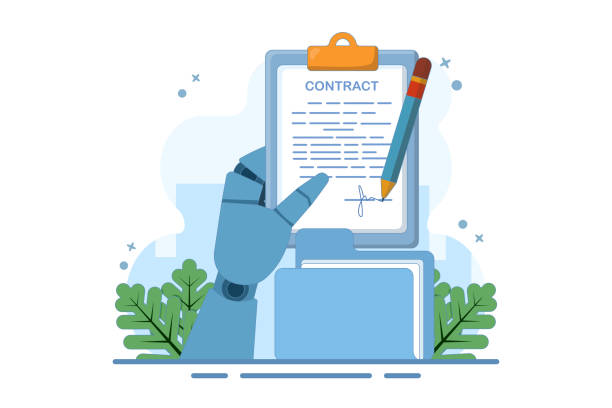
After understanding the importance of the user interface, it’s time to learn its fundamental principles.
To create a truly attractive and efficient user interface, one must go beyond visual aesthetics and delve deep into the user’s experience.
One of the most important principles is “Simplicity”.
The user interface should not bombard the user with multiple options and unnecessary complexities.
Every element should have a clear purpose and be easily understandable.
This simplicity does not mean a lack of functionality, but rather smart design to reduce the user’s cognitive load.
Another principle is “Consistency”.
All elements, from buttons and forms to fonts and colors, must be uniform throughout the website.
This consistency helps the user recognize interaction patterns and navigate the site with more confidence.
Inconsistency causes confusion and reduces user trust.
“Feedback” is also a vital principle in modern UI website design.
Whenever a user performs an action (e.g., clicking a button or submitting a form), the website should provide appropriate feedback; whether it’s a color change, a confirmation message, or a progress bar.
This feedback assures the user that their operation is being processed.
Also, “User Control” is very important.
Users should feel that they are in control; they should be able to cancel operations, go back, or edit entered information.
This sense of control improves the user experience and prevents frustration.
Finally, “Accessibility” must be a central focus.
A modern user interface must be usable for everyone, including people with disabilities.
This includes using appropriate color contrast, correct element labeling, and keyboard navigation.
Adhering to these principles in any modern UI website design project leads to creating a website that is not only beautiful but truly built for users.
New Tools and Techniques in UI/UX
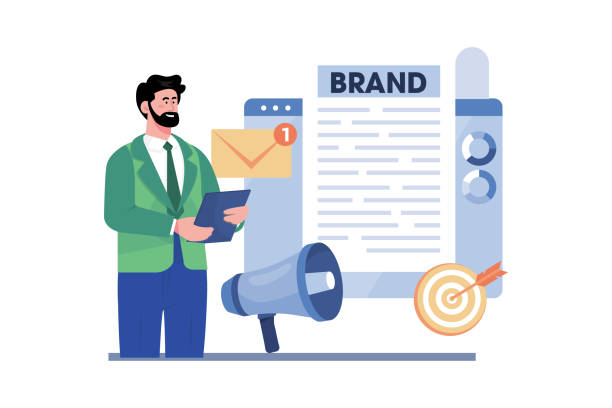
To implement modern user interface design principles, designers need a set of advanced tools and techniques.
In the last decade, UI design tools have evolved significantly, offering powerful capabilities for prototyping, sharing, and collaboration.
Among the most popular of these tools are Figma, Adobe XD, and Sketch, each with its own advantages and user community.
These software applications enable designers to quickly create wireframe designs, mockups, and interactive prototypes and share them with stakeholders and users for feedback.
Beyond tools, there are also numerous techniques to improve modern UI website design.
One of the most important is “User Testing”.
No design is complete without testing with real users.
Through A/B tests, user interviews, and usability tests, the strengths and weaknesses of the user interface can be identified and improved.
“Responsive Design”, which allows the website to automatically adapt to the user’s device screen size, is also an essential technique.
This ensures that the user experience is consistent and optimized across mobile, tablet, and desktop.
Furthermore, the use of “Design Systems”, which are collections of components, standards, and guidelines for design, greatly helps maintain consistency and efficiency in large modern UI website design projects.
These approaches and tools form the backbone of the UI design process in the current era and help create products that are not only beautiful but also incredibly functional.
| Tool | Key Advantages | Primary Use Cases | Platform |
|---|---|---|---|
| Figma | Real-time collaboration, web-based, powerful plugins | Product design, prototyping, design systems | Web, Desktop (MacOS, Windows) |
| Adobe XD | Integration with Adobe products, animation tools | User experience design, prototyping, application design | Desktop (MacOS, Windows) |
| Sketch | Active plugin community, optimized for Mac | User interface design, wireframing | MacOS |
The Impact of Psychology on User Interface Design

User interface design is not just about visual aesthetics and technical performance; it is deeply intertwined with human psychology.
Understanding how users think, feel, and react forms the core of creating an exceptional user experience.
One of the key concepts is “Cognitive Load”.
A modern user interface should minimize cognitive load, meaning the user doesn’t need to think too much to perform a specific task.
The simpler and more intuitive the visual interaction, the easier and faster the user reaches their goal.
This is crucial, especially in modern UI website design, where speed and efficiency are of paramount importance.
Gestalt Principles also play an important role in the visual organization of information.
These principles explain how the human brain perceives visual elements as meaningful patterns and wholes.
Applying these principles (such as proximity, similarity, continuity, and closure) in design helps create organized and understandable visual layouts.
Furthermore, “Persuasive Design” is also relevant, which leverages psychology to encourage users to perform desired actions (such as purchasing, signing up, or sharing).
This includes using social proof, scarcity, urgency, and trust.
Finally, “Emotional Design” focuses on creating an emotional connection with the user.
A design that makes the user feel happy, comfortable, or excited is not only more memorable but also ensures longer interaction.
In a word, modern UI website design, beyond code and pixels, is the art of understanding and responding to the complexities of the human psyche.
Did you know that poor online store design can drive away up to 70% of your potential customers? Rasaweb transforms your sales with professional and user-friendly e-commerce website designs.
✅ Significant increase in sales and revenue
✅ Full optimization for search engines and mobile
⚡ [Get Free Consultation from Rasaweb]
Responsive Design and Adaptability Across Devices

In today’s world, where users access the internet from a wide range of devices with varying screen sizes, Responsive Design is no longer an option but a vital necessity.
This approach ensures that your website is displayed correctly and performs consistently and optimally, regardless of whether the user is on a mobile phone, tablet, laptop, or large monitor.
The core of responsive design is the use of Media Queries in CSS and the use of flexible images and fluid grids, which allow content to intelligently adapt to the available space.
The importance of modern UI website design is amplified in the context of responsive design.
A design that looks great on desktop but is unusable on mobile not only loses mobile users but also negatively impacts its SEO ranking, as Google prioritizes mobile-friendly sites.
The “Mobile-First” approach in design is recommended.
This means starting the design and development process by considering the smallest screen (mobile) and then gradually adding features and details for larger screens.
This way of thinking helps designers focus on essential content and functionalities and prevents information overload on smaller screens.
Finally, ensuring that every interactive element, from buttons to forms, is easily touchable and usable on any screen size, is a fundamental pillar of modern UI website design and responsive design.
A website that works well on all devices not only improves the user experience but also enhances your brand’s credibility and accessibility.
The Role of Content in Completing the User Interface

Often, the main focus in UI design is on visual and interactive elements, but the crucial role of content should not be overlooked.
Content, meaning words, images, videos, and any type of information presented on your website, is not only complementary to the user interface but also an integral part of the user experience.
“UX Writing” refers to the process of writing text that guides users throughout their interaction with a product and ensures that messages are clear, concise, and useful.
Poor text, even in the best visual design, can confuse or even discourage the user.
Within the framework of modern UI website design, content must be carefully selected and arranged to reduce cognitive load and establish effective communication.
This includes engaging headings, clear descriptions, compelling Calls-to-Action, and friendly error messages.
Information hierarchy is also crucial; important content should be prominent and easily scannable by the user.
The use of appropriate white space, subheadings, and lists can significantly increase readability.
Also, visual content such as high-quality images, infographics, and short videos can convey complex messages quickly and effectively, adding to the website’s visual appeal.
However, it must be ensured that this content is optimized and does not slow down the website’s loading speed.
Ultimately, every word and image on the website must have a specific purpose and help the user achieve their goal.
Ignoring the importance of high-quality content in any modern UI website design project will result in a website that, although beautiful, lacks soul and genuine connection with its audience.
Challenges and Solutions for User Interface Designers
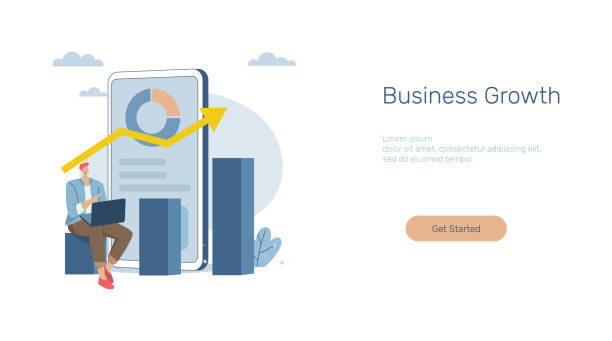
Modern UI website design, while offering numerous benefits, is not without its challenges.
Designers encounter obstacles on their path that require creative and knowledge-based solutions.
One of the most common challenges is “Over-design”.
Sometimes, designers, by adding too many graphical elements, excessive animations, or unnecessary features, complicate the user experience instead of improving it.
The solution to this challenge is adhering to the principle of simplicity and minimalism; focusing on what is truly important to the user and removing superfluous elements.
Another challenge is “Ignoring User Feedback”.
Some projects proceed without sufficient testing with real users, which can lead to designs that do not meet the audience’s actual needs.
The solution is for continuous user testing, both in the early stages and throughout development, to be an integral part of the design process.
Accessibility Issues are also a significant challenge; ensuring that the website is usable for people with disabilities requires knowledge and precise implementation of standards.
Other challenges include “Poor Performance”, where heavy graphical designs cause slow website loading.
Optimizing images, minimizing code, and using efficient loading techniques (Lazy Loading) can solve this problem.
Finally, keeping up with current trends in modern UI website design is also an ongoing challenge, as this field is rapidly changing and evolving.
Continuous learning and flexibility to embrace innovations are solutions to these challenges.
| Challenge | Description | Suggested Solution |
|---|---|---|
| Over-complexity | Adding unnecessary elements, excessive animations, complex navigation. | Adhering to the principle of simplicity, removing superfluous elements, prioritizing content. |
| Ignoring user feedback | Lack of user testing and designing based on assumptions. | Conducting A/B tests, user interviews, continuous surveys. |
| Accessibility issues | Website is not usable for people with disabilities. | Adhering to WCAG standards, proper color contrast, keyboard navigation. |
| Poor performance | Slow website loading due to heavy graphics or unoptimized code. | Optimizing images, code compression, using CDN. |
The Future of User Interface: AI and Virtual Reality

The world of modern UI website design is rapidly evolving, and new technologies are pushing the boundaries of what’s possible.
Amidst these developments, Artificial Intelligence (AI) and Virtual Reality (VR) are recognized as key drivers of innovation in this field.
AI has immense potential to personalize user interfaces based on each user’s behavior and preferences.
This means websites can dynamically adjust their content and layout for each visitor, leading to a unique and highly relevant experience.
From intelligent chatbots to content recommendation systems, AI is reshaping how we interact with the web.
Furthermore, Voice User Interfaces (VUIs) are gaining popularity, allowing interaction with websites without the need for typing or clicking, which is a big step towards accessibility and convenience.
Virtual Reality and Augmented Reality (AR) technologies are also entering the web space.
Imagine being able to interact with a product in a 3D environment or use AR to visualize furniture in your home before purchasing it.
These technologies can elevate web interactions to an entirely new level of immersion and realism, revolutionizing the user experience.
Designing for these new environments requires new skills and a deeper understanding of human interaction with 3D space and artificial intelligence.
Designers of modern UI website design must be ready to embrace these changes to build websites that are relevant and engaging not only today but also in the future.
This is a future where the line between the digital and physical worlds blurs.
Are you tired of your e-commerce site having visitors but no sales? Rasaweb solves your main problem with professional e-commerce website design!
✅ Significant sales increase with targeted design
✅ Flawless user experience for your customers
⚡ Get Free Consultation!
Case Study of Successful Websites with Modern UI

To gain a deeper understanding of the principles of modern UI website design, nothing beats examining successful real-world examples.
Many websites worldwide have succeeded in providing an exceptional user experience by creatively and intelligently applying UI/UX principles, thereby achieving significant commercial successes.
One of the best examples is the Stripe website.
Stripe’s user interface, especially in its developer section, has been praised for its simplicity, clarity, and excellent documentation.
Despite its underlying technical complexities, this site offers a very easy and understandable user experience.
Intuitive navigation, minimalist design, and intelligent use of white space are prominent features of this website.
Another example is Airbnb.
Airbnb’s UI design is based on high-quality images and a focus on visual experience.
Their booking process is very simple and smooth, with clear guidance at every step.
Also, personalization and smart recommendations based on previous searches significantly contribute to improving the user experience.
These examples show how modern UI website design can achieve success through attention to detail, a deep understanding of user needs, and intelligent implementation of UI/UX principles.
In fact, these websites have proven that investing in user experience optimization not only leads to greater user satisfaction but also directly impacts business growth and increased revenue.
By providing a flawless user experience, they have converted users into loyal customers.
The Importance of Continuous User Interface Optimization
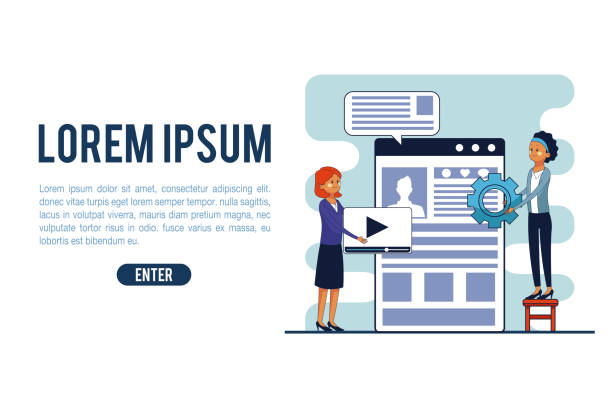
Modern UI website design is not a one-time process but a continuous cycle of improvement and optimization.
The world of web is rapidly changing; new technologies, emerging design trends, and user expectations are constantly evolving.
Therefore, a website that appears modern and efficient today may become obsolete tomorrow.
Continuous Optimization means monitoring UI performance, gathering user feedback, and implementing necessary changes to improve their experience.
This approach helps you always stay one step ahead of competitors and ensures your website remains relevant and engaging.
Web analytics tools like Google Analytics and Heatmaps can provide valuable insights into how users interact with your website.
By analyzing data on click-through rates, navigation paths, bounce rates, and dwell time, you can identify weaknesses in your user interface.
Then, by conducting A/B tests, you can test different versions of UI elements and see which performs best.
Gathering direct feedback from users through surveys, interviews, or focus groups is also crucial.
This information helps you base your design decisions on data and real user needs, not just assumptions.
Finally, regular maintenance and updates of the website to ensure compatibility with new browsers and devices, as well as applying the latest security standards, are also part of this continuous optimization process.
By adopting this approach, you can ensure that your modern UI website design will always be dynamic, efficient, and serve your business goals.
Frequently Asked Questions
| Row | Question | Answer |
|---|---|---|
| 1 | What is meant by “modern UI website design”? | It refers to designing a website that uses the latest trends and best practices in user experience (UX) and user interface (UI) to make user interaction simple, attractive, and efficient. |
| 2 | Why is a modern user interface important for a website? | A modern user interface leads to increased user satisfaction, improved conversion rates, longer user dwell time on the site, and creates a professional and up-to-date brand image. |
| 3 | What are the key elements of a modern user interface? | Key elements include simplicity and minimalism, responsiveness, effective use of white space, attractive typography, subtle animations, a suitable color palette, and intuitive navigation. |
| 4 | What role does responsiveness play in modern UI design? | Responsiveness ensures that the website is displayed correctly on any device (mobile, tablet, desktop) and provides a consistent user experience, which is essential for a modern UI. |
| 5 | How important is typography in modern UI design? | Typography plays a very important role in readability, visual hierarchy, and brand visual identity. Modern fonts and their combinations can contribute to the overall beauty and appeal of the site. |
| 6 | How are animations and micro-interactions used in modern design? | Animations and micro-interactions are used to create visual feedback, guide the user, and add a sense of dynamism and appeal to the user interface, provided they are not excessive. |
| 7 | What is the role of user experience (UX) in modern UI design? | UX is the foundation of modern UI. A modern design must first be functional, understandable, and enjoyable (UX) and then beautiful and appealing (UI). |
| 8 | What tools are used for modern UI design? | Tools such as Figma, Adobe XD, Sketch, and InVision are used for design, and frameworks like React, Vue.js, or Angular are used for implementation. |
| 9 | How can over-complex design be avoided in modern UI? | By focusing on minimalism, removing unnecessary elements, generous use of white space, and adhering to the “Less is More” principle. |
| 10 | What is the importance of user testing in modern UI design? | User testing ensures that the designed user interface is truly useful, understandable, and engaging for users, and potential problems are resolved before launch. |
And other services of Rasaweb Advertising Agency in the field of advertising
Posting ads for barbershop chairs on commercial platforms
Advertising illuminated barbershop mirrors on specialized commercial websites
Registering ads for professional hair dryers in online directories
Introducing sellers of laser hair removal devices on commercial websites
Ads for manicure and pedicure beds on digital websites
And over hundreds of other services in the field of internet advertising, advertising consultation, and organizational solutions
Internet Advertising | Advertising Strategy | Advertorial
🎯 Is your business ready to leap into the digital world? Rasaweb Afarin Digital Marketing Agency, by providing specialized services including SEO-optimized website design and comprehensive online marketing strategies, paves your path to growth and visibility. With us, have a powerful online presence.
📍 Tehran, Mirdamad Street, Next to Central Bank, Southern Kazeroun Alley, Ramin Alley, No. 6

